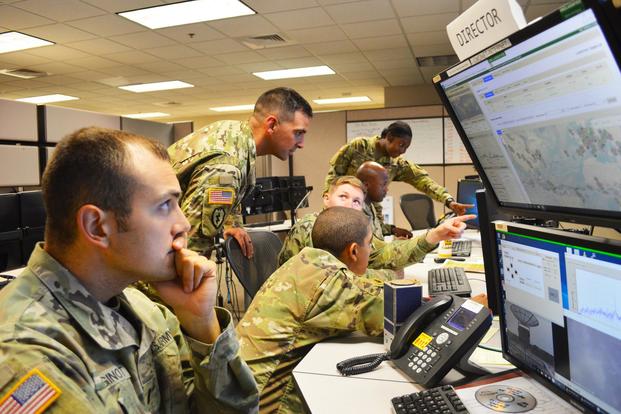Army senior leaders on Wednesday mapped out the service's plans to equip combat brigades with sophisticated space capabilities, following the Pentagon’s recent reiteration of support for establishing a U.S. Space Force.
Acting Secretary of the Army Ryan McCarthy said that the service has invested roughly $300 million across the next five fiscal years in "low-Earth orbit" satellites to provide precision targeting.
McCarthy's comments came about a week after the Pentagon activated United States Space Command -- the first step in a larger space effort involving a proposal before Congress to create a U.S. Space Force as the sixth branch of the U.S. military.
"As we work our way through this Space Command and the pursuit of Space Force -- this merger that is going in the Department of Defense -- we recognize ... some of this capability needs to be organic, particularly targeting capability," McCarthy told an audience at the Defense News Conference near Washington, D.C.
Related: Pentagon Activates Space Command to Prepare for War in the Final Frontier
Leaders will work out over time "what will stay organic to the Army and what will ultimately go to this new organization if we get through this with the Congress," he added.
In the interim, the Army is investing in several low-Earth orbit satellites, to be tested over the next 12 to 14 months at service installations such as the National Training Center in Fort Irwin, California.
"The intent is to bring that capability down to the brigade combat team echelon -- something that you would have only seen as [a colonel] in a tiered Special Operations Command unit," McCarthy said. "This capability is essential for our long-range precision fires portfolio."
Gen. James McConville, the Army's new chief of staff, said that the service is a "big user of space."
"We are very dependent, from communications to precision navigation and timing, to early warning to targeting, so we want to make sure we are tied in well as we develop the Space Force," he said.
But there may be Army-specific requirements for long-range targeting for the service to develop separately, McConville said.
"It's just like all of the services, where maybe our priorities ... for targeting certain weapon systems don't meet the other services' requirements or the space requirements, so we may invest in that ourselves," he said.
-- Matthew Cox can be reached at matthew.cox@military.com.
Read more: Sig Sauer Offers First Look at Weapons that Could Replace Army's M4 Carbine and M249














